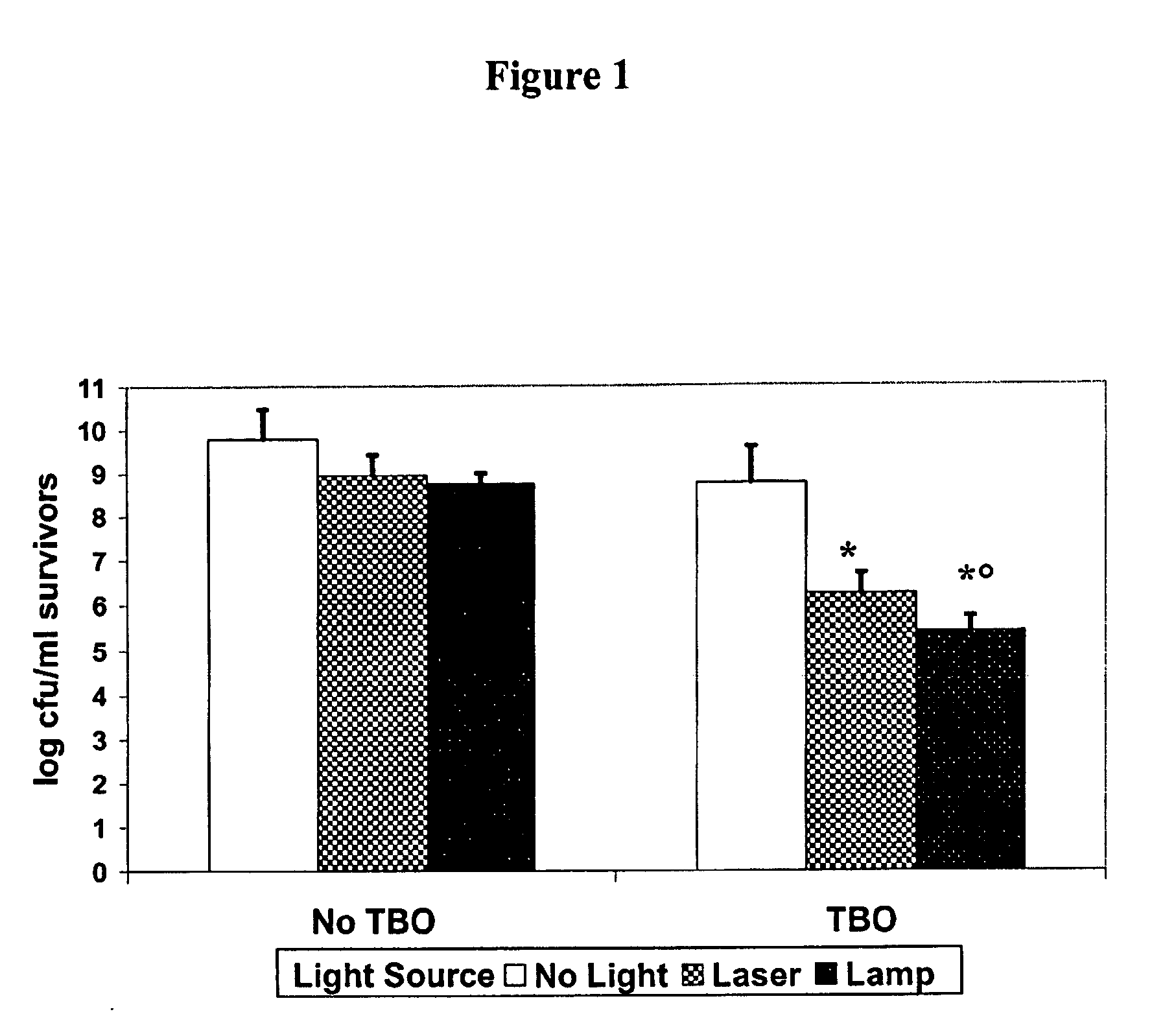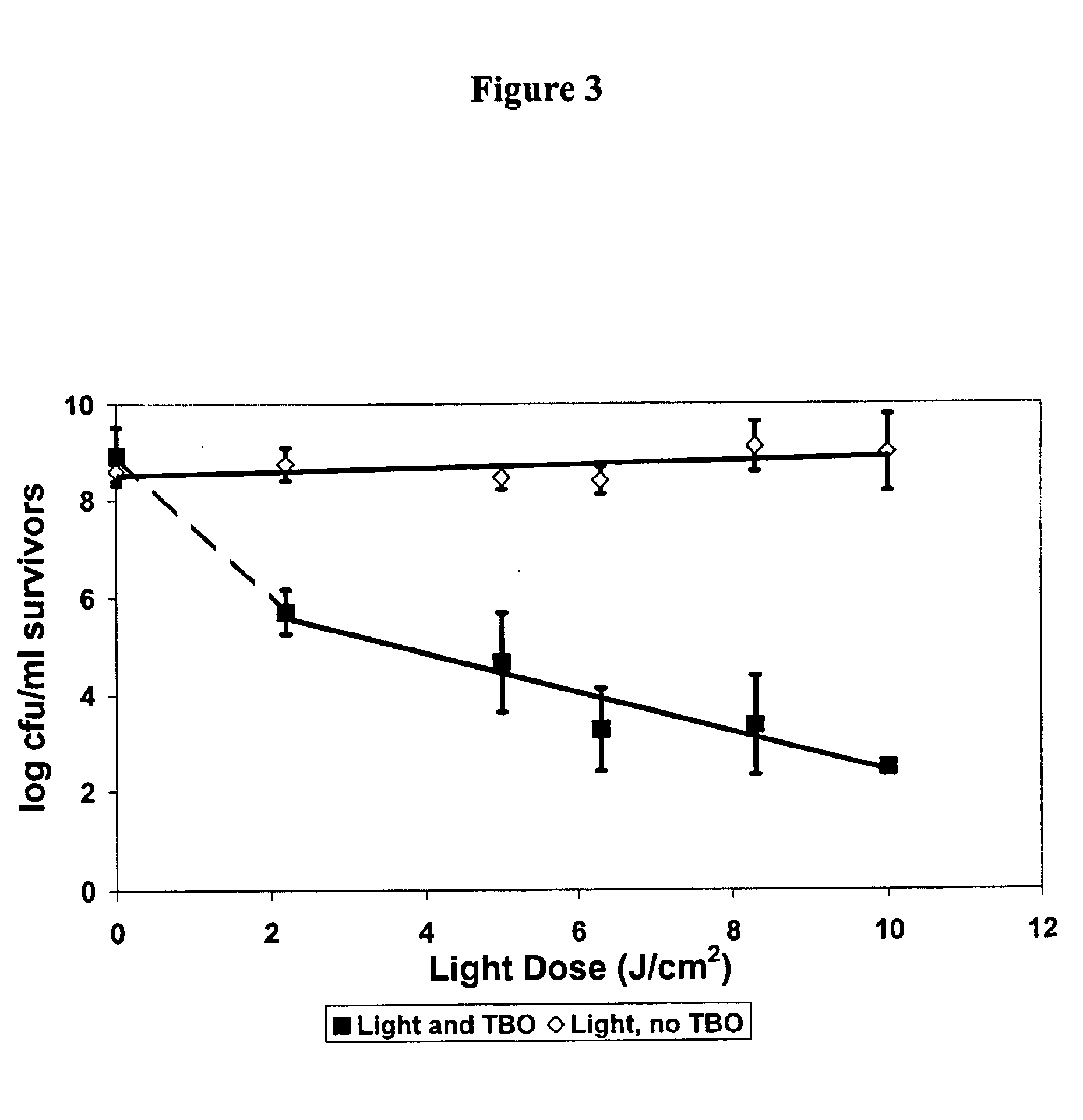Method of treating microorganisms in the oral cavity
- Summary
- Abstract
- Description
- Claims
- Application Information
AI Technical Summary
Benefits of technology
Problems solved by technology
Method used
Image
Examples
examples
[0060] Tests were conducted to investigate the effectiveness of a red-filtered xenon lamp, in combination with TBO, in suppressing P. gingivalis. The results were compared to results of tests employing a He—Ne laser in vitro. Further dosimetric and environmental analyses were performed using the xenon lamp to identify the optimal parameters for in vivo applications. Finally, the parameters were tested on four other species of periodontal pathogens.
Materials and Methods
Strains and Growth Conditions
[0061] The following bacteria were used in these experiments and cultivated in an anaerobic chamber (available commercially from Coy Manufacturing Co.; AnnArbor, Mich., USA): Porphyromonas gingivalis 381; Prevotella intermedia 25611; Actinobacillus actinomycetemcomitans UT32; Fusobacterium nucleatum 1213; Bacteroides forsythus 43037. P. gingivalis and P. intermedia strains were subcultured weekly in Todd Hewitt Broth (available commercially from Fisher Scientific; Nepean, Ontario, Cana...
PUM
| Property | Measurement | Unit |
|---|---|---|
| Time | aaaaa | aaaaa |
| Concentration | aaaaa | aaaaa |
| Concentration | aaaaa | aaaaa |
Abstract
Description
Claims
Application Information
 Login to View More
Login to View More - R&D
- Intellectual Property
- Life Sciences
- Materials
- Tech Scout
- Unparalleled Data Quality
- Higher Quality Content
- 60% Fewer Hallucinations
Browse by: Latest US Patents, China's latest patents, Technical Efficacy Thesaurus, Application Domain, Technology Topic, Popular Technical Reports.
© 2025 PatSnap. All rights reserved.Legal|Privacy policy|Modern Slavery Act Transparency Statement|Sitemap|About US| Contact US: help@patsnap.com



